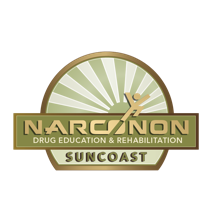Safe Injection Sites for Drug Addicts…Are They a Good Idea?

In the fight against the opiate problem, many ideas have been formulated to potentially help curb the insane crisis our nation is facing. Every day, people are dying. Back in the day, a heroin addict was an elusive creature who lurked in the shadows and down dark allies. Now, it’s a lot closer to home. These heroin addicts are our mothers and fathers, sons and daughters who are shooting up heroin and overdosing, becoming another unfortunate statistic. With all of the ideas of how we can beat the opiate epidemic, a few of them extreme, one stands out amongst the others.
A safe injection site is basically a room where a person can legally shoot up drugs and get high under medical supervision. This is yet another harm reduction method striving to reduce negative effects of using drugs, such as the spreading of disease, overdose and death. These rooms offer sterile equipment, referrals to drug rehabilitation programs and medical supervision in the case of an overdose. The belief is addicts are going to use drugs anyway, so why not give them a safe place to shoot up where they won’t use dirty needles and in the event the heroin is cut with Fentanyl, doctors and nurses will be right there to respond to the emergency.
None of these rooms exist in the United States as of yet, but Massachusetts is looking to become one of the first states to engage in this type of harm reduction program. The Massachusetts Medical Society will vote later this month to decide if the state is going to participate in a pilot program involving safe injection sites. Governor Charlie Baker would have to issue an executive order for the bill to move forward and members of the medical society would have to lobby state legislators to get the safe injection site immune to state drug laws. The bill states one city in the state will host the site and it will most likely be located in Boston, overseen by Boston Health Care for the Homeless, located in the South End.
Those who support these safe injection sites claim these rooms would be used as tools for physicians and nurses to save lives in case of an emergency, whereas those who oppose it believe these rooms just advocate illegal drug use and do nothing to solve the problem. The model for harm reduction, to some degree, does advocate illegal drug use while trying to reduce the negative consequences caused by it. The truth of the matter is addicts are going to use drugs no matter what. It doesn’t matter if the state gives a room to an addict to shoot up in while under medical supervision, they’re going to get high regardless. Is it better that, since they’re going to do it anyway, they might as well do it safely? That’s the ethical and moral question being asked in regards to this program.
Either way you look at it, the opiate crisis isn’t getting any better. We can create as many harm reduction methods as we can think of, but at the end of the day, drug treatment and rehabilitation is the only answer to handling the nation’s drug problem. While harm reduction may be helpful to some degree, it’s not the complete answer. In order to stop using drugs, an addict needs to figure out why they use drugs and handle the problems they keep medicating away. Then, and only then, can an addict live a drug-free life. Harm reduction can’t do that by itself. Only good treatment can.


